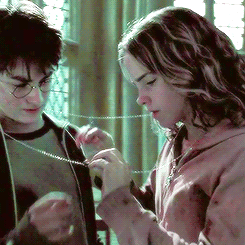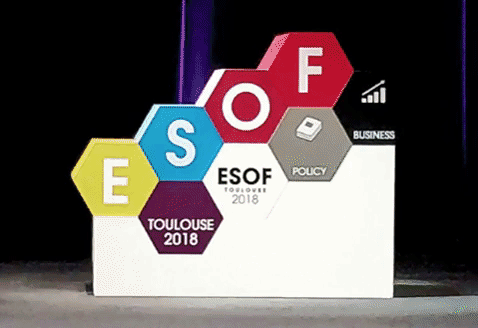ESOF 2018: big science, little me
To put it simply, EuroScience Open Forum (ESOF) is big. At the 2018 conference in Toulouse, there were more than 150 panel sessions, 200 outreach events and 4000 people attending. I’ll admit, I was a little overwhelmed. I’d spent a good chunk of my childhood (and adult life, if I’m honest) wishing to be Hermione Granger with a time-turner, but this time I had to accept that I’m not – I can’t be in two places at once. I was going to have to make some decisions about where to go, what to see and who to meet. With this blog post I’ll give a rundown of the decisions I made that turned ESOF into the unforgettable experience that it was.

Which session should I attend?
This was a constant battle. With as many as fourteen sessions happening simultaneously, I knew that whichever one I chose, I’d feel like I was missing out. The breadth of topics discussed was incredible. From flash mobs in shopping centres to cancer immunotherapies; the implications of Brexit to the cosmic vastness of space; rethinking science communication to gender equality. Every flavour of scientific theme was on the menu. All were food for thought.
Perhaps most relevant to my role as Science Writer and Outreach Coordinator was the session entitled ‘Science is never boring’. This session focused on science communication, delivered through a range of media. On the panel – alongside Verena Viarisio, EMBL’s Outreach and Local Communications Manager – were science communicators specialising in writing, podcasts, presentations, events, graphic design and theatre. Despite the different channels, the advice to the audience could be distilled into three main points.
- Pick your audience (and know who they are!)
- Define your message
- Keep it simple
One extra nugget I took away from this session is that when you’re communicating science, you should pick the medium that you actually enjoy! It makes so much sense. With enjoyment comes enthusiasm. And while enthusiasm doesn’t equal expertise, it’ll at least motivate you to put in the time and effort to learn. This is something I’ve been given the opportunity to develop since moving out of the lab and starting at EMBL.
There were times when the decision was easy. Of course I was going to be front row centre at the EMBL session, ‘What would it take to regrow an arm’, cheering on Iris Kruijen, EMBL’s Press Officer, who was moderating the panel. The panellists were James Reddington, James Sharpe, Robert Prevedel and Aissam Ikmi, who brought with them a range of expertise in genomics, microscopy, and tissue regeneration. I’m constantly surprised at the way seemingly disparate topics researched at EMBL seamlessly knit together, and this session embodied that perfectly.
But how to decide? Read, read, read the abstracts! Sometimes a panel still won’t be what you expect, but other times it turns out to be better! It also helped to gather a group of conference buddies so we could update each other on the different sessions we’d attended.
Should I ask a question?
An emphatic ‘yes!’ is always the correct answer. But when faced with a microphone and 200 professional peers, my answer often becomes less enthusiastic. What changed my mind was remembering that one of the reasons I was at ESOF was for growth: personal as well as professional. To my amazement, the room did not fill with the sound of pointing and laughing. I levelled up and next time this won’t be a big deal. Promise.
Who should I try to meet?
Anyone who’s willing to chat! Those crewing the exhibition stands are always after someone to approach them. Even a serendipitous escalator ride led me to spontaneously introduce myself and talk with one particularly inspiring speaker.
Also, I had the most amazing luck, along with Berta Carreño, another science writer at EMBL, to bump into an incredible mix of scientific researchers, advisors and communicators from Europe and around the globe. Our little group felt like a microcosm of everything that ESOF represents. As well as keeping each other updated on parallel sessions, we exchanged plenty of useful and useless knowledge, over lunches, coffee and spacecrafts (see below). This included facts such as:
- Implantable wafers that vaccinate against certain cancers exist and are currently being trialled
- Japanese rice fish are essentially a bag of stem cells and can be used as a model organism instead of zebrafish
- Researchers can fluorescently tag a drug after it’s entered a cell
- You can trust that someone’s an honest person – and/or mad as a chair in a wonderful way – if they impersonate a dolphin within the first two hours of you meeting
- Don’t drink cappuccino after 2 pm and never eat gnocchi on a Wednesday in Italy*
I honestly can’t remember how we met half of the group, but post-ESOF meet-ups are already well on their way!

What should I do in the evenings?
Eat, drink and be merry! There was still so much to do! ESOF organised an extensive ‘Science in the City’ programme with an incredible number of evening outreach events which were free for anyone to attend. While lots of them were in French – to cater to the local, mostly non-scientific audience – a few included a mix of French and English. One in particular was Eurêkafé, which hosted a superb series of scientific flash talks.
Then there was the party at Cité de l’Espace. What better way to host a party for nerds (myself very much included) than at a space theme park? I don’t know what I enjoyed seeing most, the inside of the Mir space station, the rings of Saturn through an observatory telescope, or a few hundred enthusiastic attendees cutting some wild shapes on the dance floor.
What should I take back with me?
All in all, attending ESOF was an incredible experience. Before I arrived, I honestly didn’t know what to expect – I’d never been to a conference as big or far-reaching. It was an eye-opener to see what else revolves around science, and how I can get involved. Of course, this included scientific communication and public outreach but the world of policy shaping, funding landscapes and business innovation also became that little bit clearer. I learnt so much, met so many people, and made some decisions. Although a time-turner would always be a useful tool when it comes to the opportunities available at EMBL, for now I’m learning how to get by without one.
*Italian tradition dictates that cappuccino is only for breakfast and gnocchi is only for Thursdays.